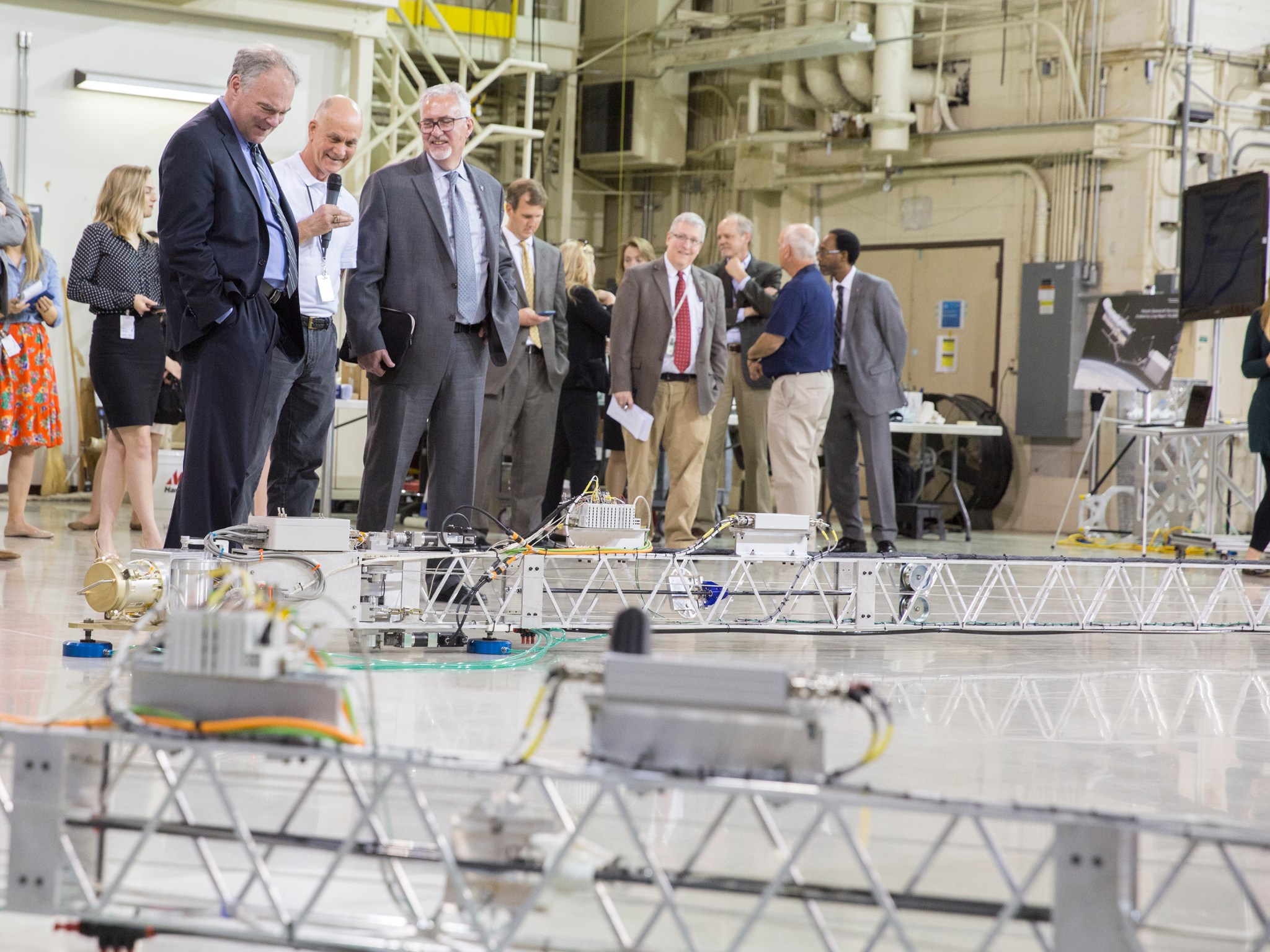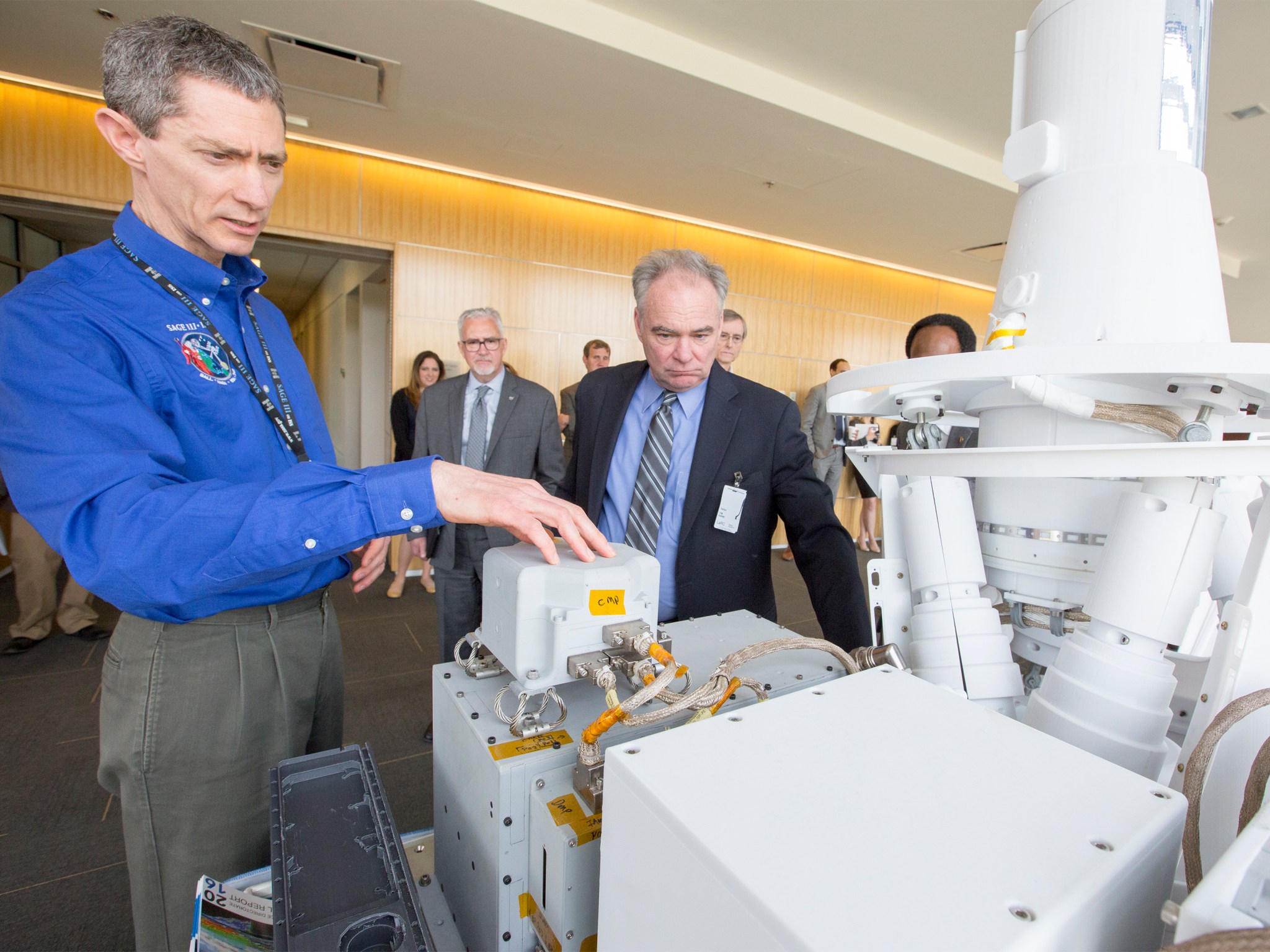
Fresh from a Monday morning seminar on career and technical education, U.S. Sen. Tim Kaine of Virginia paid a visit to NASA’s Langley Research Center in Hampton and said he’s working to boost the number of scientists, engineers and technicians produced by our nation’s schools and colleges.
“We’re thinking about the workforce needs of tomorrow and what are the strategies we can put in place,” said Kaine, who serves on the Senate’s Health, Education, Labor and Pensions Committee. “We want to make sure that … we’re teaching the science teachers of tomorrow who will inspire kids toward these kinds of careers.”
Kaine, a former Virginia governor who has represented the commonwealth in the Senate since 2012, also checked on the progress of Langley’s Measurement Systems Laboratory. Construction on that $95.6 million, 175,000-square-foot facility started in April 2017 and is scheduled to be complete in 2019.
“A lot of what NASA does is about measurements,” Kaine said, noting that the new facility will help Langley develop sensors needed for critical missions in Earth science, aeronautics and space exploration.
“This lab that’s underway now will enable the most sophisticated measurements,” Kaine said. “I really wanted to come back and see it under construction, because I had advocated for the funding for it.”
Elsewhere at Langley, Kaine took a look inside the center’s new Katherine G. Johnson Computational Research Facility and listened to an overview of current research from Center Director Dave Bowles.

David Young, director of Langley’s Science Directorate, gave Kaine a briefing on Earth science projects including Clouds and the Earth’s Radiant Energy System (CERES), Tropospheric Emissions: Monitoring Pollution (TEMPO) and Stratospheric Aerosol and Gas Experiment III (SAGE III) on the International Space Station.
Finally, Kaine witnessed a demonstration of a Langley-created robotic arm concept created to help NASA build structures in space. Called Tension Actuated in Space MANipulator, or TALISMAN, the system is being developed as part of a collaboration with industry partner Orbital ATK of Dulles, Virginia.
“Seeing what they’re doing with in-space construction is fascinating,” Kaine said. “If you can put up components and mechanically assemble items in space, you can get a lot more up there and do it in a way that’s much more cost effective.”
In-space assembly is a key component of NASA’s plans to build a Lunar Orbital Platform-Gateway in the 2020s. Elements of the gateway are to be launched on the agency’s Space Launch System or commercial rockets, then put together in space. The gateway will then provide the foundation for human exploration deeper into the solar system.
Kaine said he was happy to get an update on Langley’s many advancements.
“It’s always good to come here because this is such a center for innovation,” Kaine said. “Langley is an absolute national treasure and an important pillar of the Hampton Roads economy. I’m really glad I could come out today.”

























